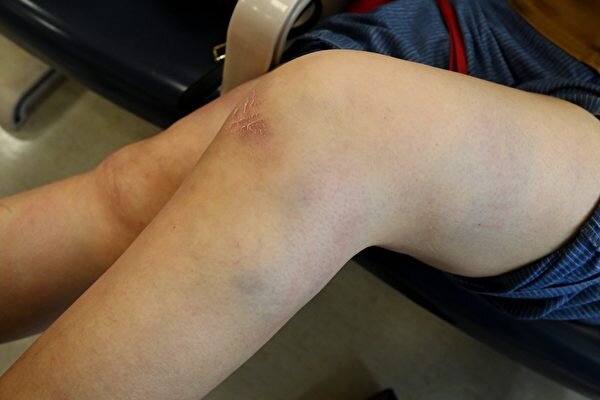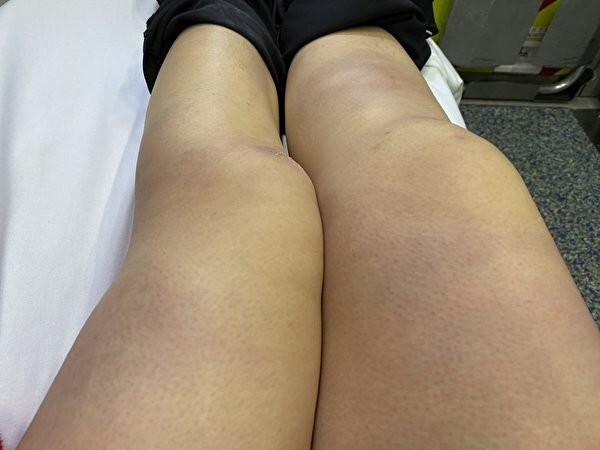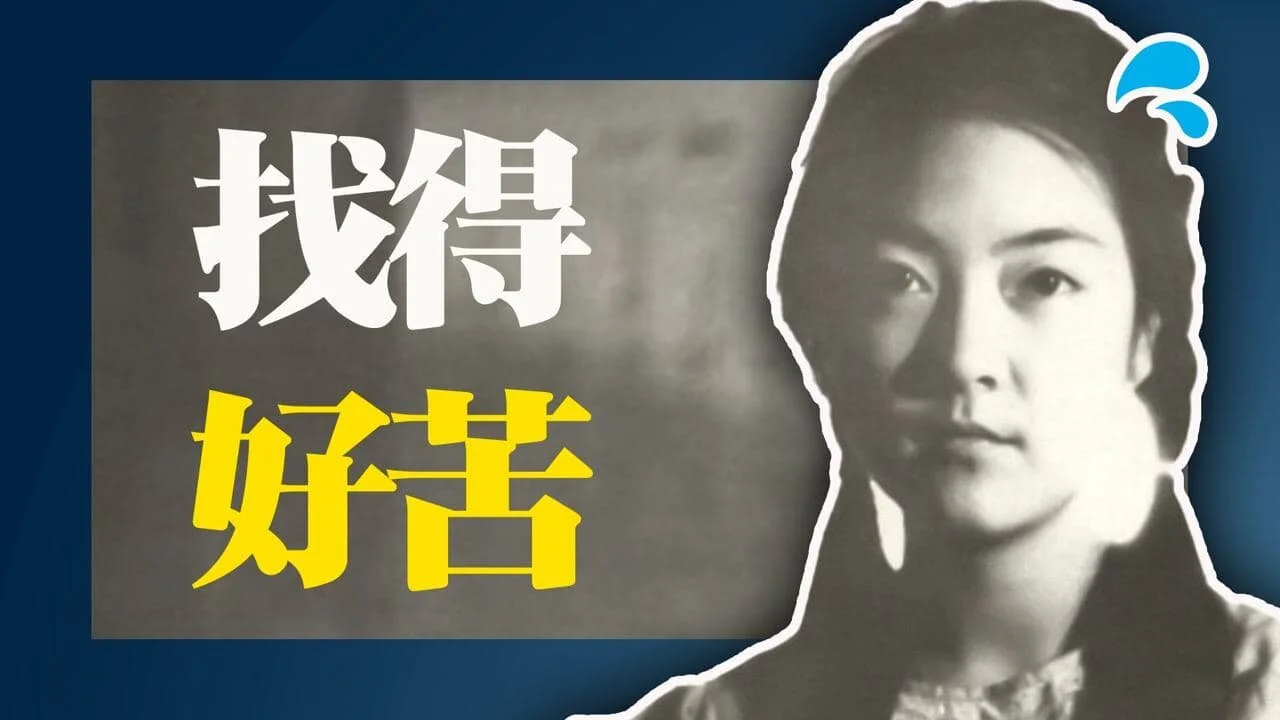Epoch Times Reporter Attacked in Hong Kong & Faustian Bargains on the Mekong River
Hello, everyone, welcome to “Inconvenient Truths”. I am your host Jennifer Zeng.
Today I will talk about 4 topics: a reporter from the Epoch Times attacked in Hong Kong; the finally released census data of China; a little bit of an update on Tesla’s situation in China; and how the CCP’s investment in the Mekong River is affecting those Southeast Asian countries. So please make sure you stick around till the end.
Before we go on, please make sure you subscribe to my channel and share my videos if you haven’t, and turn on the notification bell so that you don’t miss new shows.
Epoch Times Reporter Attacked in Hong Kong
First of all, let me do a quick update of an Epoch Times reporter in Hong Kong being attacked, and how the situation of Hong Kong is getting worse and worse.
Remember I did a program about Hong Kong’s richest man Li Ka-Shing being marginalized for not actively supporting the CCP a while ago?
In that show I talked about the printing factory of the Epoch Times newspaper being broke into and printing machines and computers being smashed, and Sarah Liang, a reporter from the Epoch Times, as well as a good friend of mine, being followed. This man even went to her apartment to confirm her address and to harass her on April 24.
Well, today, at noon local time, she got physically attacked in front of her apartment building and had to be rushed to the hospital in an ambulance!
Epoch Times reporter Sarah Liang rushed to the hospital after being attacked on May 11 outside her apartment building. Source: The Epoch Times.
Let’s show a few pictures of the bruises on her legs. Basically as she was standing outside her apartment, a large man in his 40s suddenly got out of a car and beat her up with a bat for about one minute, and more than 10 times, and then jumped into his car and drove away. A witness saw that his car was a black Mercedes-Benz, and the license plate number is “TV3851”.
Bruises on Sarah Liang’s legs. Source: The Epoch Times.
Bruises on Sarah Liang’s legs. Source: The Epoch Times.
Bruises on Sarah Liang’s legs. Source: The Epoch Times.
After Sarah finished her injury check in Queen Elizabeth hospital, she held a press conference outside.
She told the press that last Saturday, on May 8, while she was standing at the same location, a man suddenly ran to her, and while he was running, a black bat dropped out of his clothes. He was wearing a long sleeve black jacket although it was very hot, obviously to hide his bat. He was a little bit surprised and at loss as to what to do as his hidden bat fell to the ground unexpectedly. He hesitated for a bit and then walked away. Sarah felt that he looked strange and took this photo while he walked away.
On May 8, the man ran towards Sarah Liang who was waiting for a bus, and walked away after a hidden bat dropped out of his jacket. Source: The Epoch Times.
Sarah Liang holding a press conference outside Queen Elizabeth hospital. Source: The Epoch Times.
Sarah Liang holding a press conference outside Queen Elizabeth hospital. Source: The Epoch Times.
Guo Jun, director of the Hong Kong edition of The Epoch Times, said there was no doubt that the CCP was behind the assault on Sarah Liang. Guo called on the international community to pay attention to the safety of all reporters working in Hong Kong.
Guo Jun said, the CCP’s goal with this attack, as well as the others, was to force The Epoch Times to abandon its business in Hong Kong. The safety of the staff at the outlet’s printing plant has been another concern. There have been unidentified vehicles and people spotted near the facility recently.
The Chinese edition of The Epoch Times called on Hong Kong Police to carry out their duty to investigate all unresolved cases involving the Hong Kong bureau.
The outlet just issued a statement, saying, “We call on the general public in Hong Kong to continue to support The Epoch Times. The Epoch Times will not back down and it will continue to provide truthful coverage and safeguard Hong Kong.”
It also called on the international community to help “prevent the CCP’s escalating violence against Hong Kong media.”
The Hong Kong Journalists Association (HKJA), quickly posted a statement on its Facebook page today, condemned the violence against Sarah Liang and “solemnly urged” the police to quickly bring the attacker to justice.
The statement says, “Freedom of the press is a core value that makes Hong Kong a success. We will never tolerate any violent threats against the media or journalists. ”
Please make sure that you share this video as widely as you can to show your support for freedom of speech in Hong Kong. Like I said before, the Epoch Times is one of the only few independent media outlets in Hong Kong that are still reporting from the front line of the battlefield against the CCP. If people like my friend Sarah Liang are brave enough to stay in Hong Kong to do this most difficult job, we at least can do a little bit of our own in a far less tough environment.
So please do share this video to show your support.
China 2020 Census Shows Population Growth Slipped to Lowest Ever
Now, let’s move on to our next topic: China’s much anticipated census results.
After a lot of delay, the CCP finally published its census results today.
It says that China’s total population is 1.41178 billion. That is a 5.84 percent increase compared with the 1.34 billion in the 2010 census.
However, the results also show that China’s population growth in the decade to 2020 slumped to the least in official records dating back to the 1950s, that is, an annual growth rate of only 0.53 percent.
Yi Fuxian, a well-known demographer and author of the book “Big Country with an Empty Nest”, has sent a number of tweets since the results were released.
He insisted that China’s real population is unlikely to exceed 1.28 billion, and said that the census data has been revised.
He also created some PowerPoint files to illustrate how corruption exists in every aspect of the census, and why the CCP’s official results cannot be trusted.
Given the history and the nature of the CCP, which is lying all the time, I tend to believe in Yi Fuxian’s analysis instead of the CCP’s official numbers. How about you?
Tesla Puts Brake on Shanghai Land Buy
Now, a little update on Tesla in China.
According to Reuters, Tesla has halted plans to buy land to expand its Shanghai plant and make it a global export hub.
If you have watched my last show on Tesla, I think you will not feel surprised. The CCP has created a lot of trouble for Tesla recently because it wants to have Tesla’s technology, market and data. Tesla definitely isn’t feeling happy about these unpleasant experiences.
I forgot to mention some important information in my last show regarding the woman who jumped on top of a Tesla car to protest in Shanghai’s International Auto Show. And the important information is this: although she claimed that her family encountered an accident because the Tesla brake failed, the local police actually had issued a liability report right after the accident, which says that her father should be 100% responsible for the accident, as he was speeding before he crashed into the cars in front of him at a traffic light.
So why has the CCP supported that woman? Please go back to watch my last video about Tesla if you haven’t.
The CCP’s Investments in Mekong River Is A Faustian Bargain
Now, let’s move to our last topic today: the CCP’s investment in the Mekong River.
Recently after Xi Jinping made an “important” speech at the recent U.S.-led virtual climate summit, Xinhua published an article and interpreted the speech as the guideline to build a “Human Community With A Shared Future”. The article boasted about the 7 hydropower stations on the Nam Ou River in Laos built by the CCP as a perfect example. However, an expert said those projects are Faustian bargains, which means people are trading their souls with the devil and will eventually hurt themselves.
Now let’s check how and why these projects are Faustian bargains.
Nam Ou River in Laos is one of the 12 principal tributaries of the Mekong River, the largest river in Southeast Asia. Mekong originates in China, and spans six countries in Southeast Asia.
Over the past five years, the CCP’s “One Belt, One Road” program, or Belt and Road Initiative (BRI), has targeted the Mekong River Basin and invested in a number of major infrastructure projects, including hydropower stations.
While the CCP's investment in these hydropower projects has brought external funding to local governments, it has also posed a direct threat to the livelihoods of the people of the Mekong River Basin.
Why?
Threatened by Dams, Mekong River May Become another Yangtze
The Mekong River is known as a "natural fishery”. It is famous for its rich diversity of fish, with 1,148 species of fish, ranking third in the world in fish diversity after the Amazon and the Congo River basins.
The Lower Mekong Basin has the largest inland capture fishery in the world, with a total annual catch of 2.3 million tons of fish valued at $11 billion, providing up to 80% of the animal protein needed by the people of the Mekong River Basin on a daily basis.
The Mekong River is also home to many economically valuable fish, including the world's largest freshwater fish, the stingray. Four of the world's top ten freshwater fish live in the Mekong River.
Yet fisheries in the Mekong River Basin are now facing the threat of dams. According to Nature magazine, an estimated 60% of the catch in the Lower Mekong Basin is made up of migratory fish that need to cross the river unimpeded to spawn in suitable areas. The construction of dams will impede the migration of these fish and put many of them at risk of extinction.
The World Wide Fund for Nature published a study in May last year called "Rivers of Giants - Giant Fish of the Mekong". The study says that dams on the Mekong's mainstem and tributaries are the greatest and most pressing threat to the Mekong's giant fish because they disrupt the migratory routes of the fish.
Expert hydrologist Wang Weiluo said in an interview with the Epoch Times that the dams block the downward flow of sediment, which contains nutrients for the fish. The water flowing from the reservoir is also several degrees cooler than normal river water, which can also disrupt fish reproduction.
Actually, the Mekong River has already seen a 76% decline in freshwater fish and a 94% decline in the number of giant fish since 1970.
According to the Mekong River Commission, the loss of fish due to dams is estimated to be nearly $23 billion by 2040. In addition to fisheries, the loss of forests, wetlands and mangroves could be as high as $145 billion. The dams will also reduce sedimentation and limit rice growth along the Mekong River.
Wang Weiluo said that the dams in China’s Yangtze River basin have left the Yangtze fishery in dire straits, and because of that, the CCP has imposed a 10-year ban on fishing in key areas of the Yangtze River basin. If Mekong becomes another Yangtze, how will the tens of millions of fishermen in the Mekong River Basin survive?
The CCP Invests in Mekong River to Control Southeast Asian Countries
Over the past 10 years, hydropower development in the Mekong River Basin has been expanding. On the mainstem, there are 11 projects in operation or under planning, including seven hydropower stations in Laos, two in Cambodia and two on the Lao-Thai border.
The construction of hydropower stations in the Mekong River Basin is one of the key initiatives of the CCP's "One Belt, One Road" efforts in Southeast Asia.
In Laos, the CCP has already built the 100,000-kilowatt Nam Lik 1-2 hydropower station, the 120,000-kilowatt Nam Ngum 5 hydropower station, and the Nam Ou River hydropower station under the so-called "Build-Operate-Transfer (BOT)" model.
What does the BOT model mean? It means the CCP builds and operates these projects first, before transferring them to local governments.
Using the BOT model, the CCP would sign a 20-year or longer concession agreement with a local government after investing in the construction of these hydropower stations.
In Cambodia, the CCP has also invested in Kirirom 1 and 3 hydropower station projects, Kamchay station, Tatay hydropower station, Stung Atay hydroelectric power project, Lower Stung Russei Chrum station, and Lower Se San 2 hydropower station, all under the BOT model.
Take the Sino-Lao cooperation project Nam Phay Hydropower Station as an example. The Chinese side holds 85% of the project's equity and will have a 25-year concession period after the project is officially put into commercial operation.
Wang Weiluo said, the operation of these hydropower stations directly affects all aspects of the local energy supply and river channel management.
Xi Jinping once said that the Three Gorges Project is "a national important weapon" and "a major national important weapon must be in our own hands".
Wang Weiluo said, by the same token, the projects on the Mekong River are also “major national important weapons”, as these projects have the same ability to impact those countries’ rise or decline.
However, those countries have handed their “national important weapons” to the CCP.
Wang Weiluo said, the CCP's promotion of the "One Belt, One Road" program in the Mekong Basin reveals its ambition to control not only China's “major national important weapons”, but also those of the Mekong Basin countries’, in order to control Southeast Asia.
Well, that’s all for today’s Inconvenient Truths. Once again, please do share my video today to raise awareness of all of these important issues, especially about Hong Kong’s worsening situation. I do hope the world can stop the CCP before it completely destroys Hong Kong, and the world, for that matter.
Thank you. See you soon!
5/11/2021 *
Truth Saves Lives. Subscribe and support! 真相能救命。請支持!
Donate to me directly 直接捐款:https://donorbox.org/inconvenient-truths-by-jennifer-zeng
Subscribestar 會員頻道: https://bit.ly/3fEzeJB
YouTube 油管:bit.ly/3b87DPj
GoFundme 衆籌:https://bit.ly/2zx6LVw
Patreon 網站:https://bit.ly/3cvBy3H
Paypal 捐款:http://paypal.me/JenniferZeng97
Bitcoin 捐款:bc1qlkkvwyvw96x3xx6jgzkhlnnv0nv3d9vm078vfd












